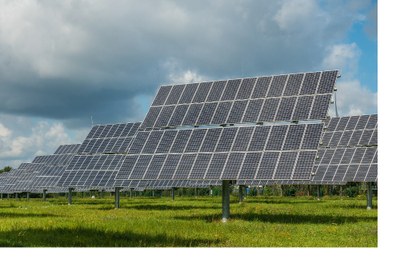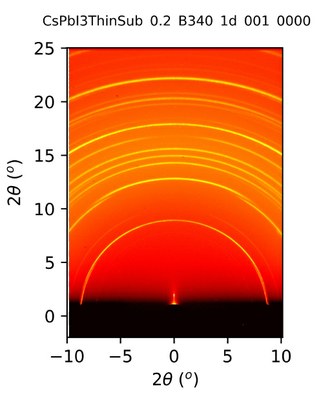Cer danyola del Vallès, 26th July 2019 The demand for green solar-generated electricity is growing and the search for new materials for developing cheap and efficient solar cells is underway. The so-called metal halide perovskite crystals have emerged as superstars for harvesting solar energy, promising high performance (current efficiency record at over 24% conversion of sunlight into electricity) and relatively trivial processing requirements and costs.
danyola del Vallès, 26th July 2019 The demand for green solar-generated electricity is growing and the search for new materials for developing cheap and efficient solar cells is underway. The so-called metal halide perovskite crystals have emerged as superstars for harvesting solar energy, promising high performance (current efficiency record at over 24% conversion of sunlight into electricity) and relatively trivial processing requirements and costs.
Perovskite-based devices have recently entered the commercial solar cell market, however, their success and destiny will hinge on improving their long-term stability. This is because some of the promising perovskite materials, like cesium lead triiodide (CsPbI3), struggle to stay black and remain functional under real-world conditions. Instead of being black, CsPbI3 is inclined to form a yellow non-perovskite crystal structure. Therefore, scientist the world over are striving to solve this problem – how do we form a stable black CsPbI3 thin film, for ambient device operation?
A team of scientists from KU Leuven in Belgium has recently discovered a fundamentally new solution to this problem, and have revealed that the planar architecture of perovskite solar cells can in fact help stabilize black CsPbI3 thin films. They have shown that forming a strong junction between the perovskite and the glass substrate on which it sits, large crystal strains are introduced, shifting its thermodynamic preference toward the desired black form. In particular, the experiments have been performed both at the ALBA Synchrotron and the European Synchrotron Radiation Facility on CsPbI3 device-ready thin films which were annealed to 330ºC and after rapidly cooled to room temperature. The heating step is central because the perovskite material binds to the substrate and then is restricted upon cooling (so-called substrate clamping). In this way, the substrate helps to maintain the desired black form structure of the CsPbI3.
The synchrotron light technique used is called GIWAXS (grazing incidence wide angle X-ray scattering), where incident X-rays scatters from the flat perovskite film under a grazing angle, projecting ring-shaped diffraction signals onto the detector, which can rapidly record data. Thanks to this cutting-edge technique scientists could deeply analyze the structure of these materials and understand the strain-induced changes engineered into the films. These insights provided a clear theoretical path to follow, pursued by collaborators at Ghent University (Belgium) who have confirmed unequivocally the positive shift in the crystal phase energetics observed experimentally.

Diffraction pattern from GIWAXS technique at the NCD-SWEET beamline, ALBA Synchrotron.
The results confirm substrate clamping and strain is a key enabler in the design of stable perovskite-based optoelectronic devices. The proposed mechanism is fundamentally new and different to other stabilization methods, which typically involve altered chemistry and material morphology, helping to widen the design options on offer to engineers looking to make stable perovskite-based solar cells. “It can provide a promising new stabilization mechanism for the field to play with and a large fundamental advance for technologies based on perovskite thin films”, explains Julian Steele, scientist from KU Leuven. “The dramatic improvement to the phase stability range through substrate clamping is likely to disrupt current mainstream device designs, and motivate the development of more complete ones” he adds.
The work, published in Science, has involved contributions from a wide variety of international research laboratories and disciplines: the KU Leuven and Ghent University in Belgium, the NCD-SWEET beamline from the ALBA Synchrotron in Spain, the European Synchrotron Radiation Facility (ESRF) in France, the Western Washington University in the USA, the University of Toronto in Canada, the Universidad Castilla-La Mancha in Spain and the Nanjing University in China.
Referencia: Thermal Unequilibrium of Strained Black CsPbI3 Thin Films Julian A. Steele, Handong Jin,Iurii Dovgaliuk, Robert F. Berger, Tom Braeckevelt, Haifeng Yuan, Cristina Martin, Eduardo Solano, Kurt Lejaeghere, Sven M. J. Rogge, Charlotte Notebaert, Wouter Vandezande, Kris P. F. Janssen, Bart Goderis, Elke Debroye, Ya-Kun Wang, Yitong Dong, Dongxin Ma, Makhsud Saidaminov, Hairen Tan,Zhenghong Lu, Vadim Dyadkin, Dmitry Chernyshov, Veronique Van Speybroeck, Edward H. Sargent, Johan Hofkens, and Maarten B. J. Roeffaers Science (2019).




